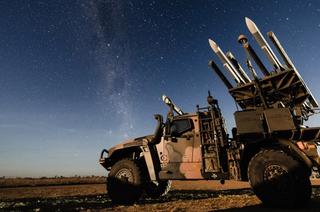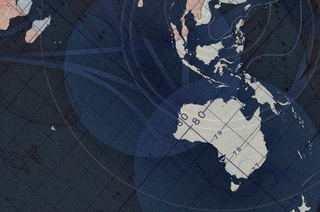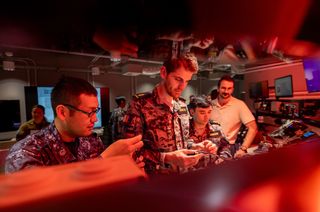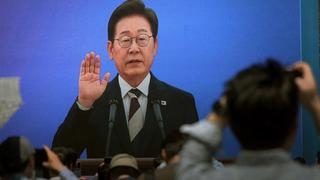Lee Jae Myung of the progressive Democratic Party of Korea (DPK) emerged victorious in South Korea’s (ROK) snap presidential election on 3 June. He enters office as his party controls 175 of the 300 seats in the National Assembly and faces a weakened opposition. How effectively Lee can leverage these favourable political circumstances to address a slowing economy, navigate global trade headwinds and unify a still deeply divided electorate remains to be seen. His main conservative rivals, Kim Moon-soo and Lee Jun-seok, collectively secured 49.5% of the presidential vote (41.2% and 8.3%, respectively), just narrowly edging out Lee’s share of 49.4%. The result underscores that in the six months since former President Yoon Suk Yeol’s imposition of martial law and subsequent impeachment, South Korea’s political polarisation has only deepened — divisions that Lee has pledged to unite.
For Australia and South Korea’s other Indo-Pacific partners, the key question now is whether President Lee will sustain the strategic momentum set in motion by his conservative predecessor’s outward facing foreign policy agenda or revert to a more Peninsula-focused orientation that has traditionally characterised a number of previous progressive South Korean administrations. Former President Yoon’s ambition to transform South Korea into a “Global Pivotal State”— a country committed to advancing shared liberal democratic values and cooperation with like-minded partners — included the release of his administration’s Strategy for a Free, Peaceful, and Prosperous Indo-Pacific Region in 2022 as a core tenant of this effort. That document reflected South Korea’s appetite to play a regional role commensurate with its growing power. It also signalled an important shift in Seoul’s strategic outlook, with its assessment of regional challenges and objectives more closely aligned with the United States and other like-minded countries, including Australia and Japan, than at any time before.
For Canberra, Washington and other capitals, how the Lee administration approaches issues of regional strategy will shape the strategic and security dynamics of the Indo-Pacific, including those of the Australia-ROK partnership and the US-ROK alliance. This is especially critical as developments on the Korean Peninsula and any effort to sustain a credible strategy to deter adversaries in Northeast Asia will influence Australia and the United States’ strategic calculus and security fortunes.
Lee Jae Myung’s Indo-Pacific inheritance
The Yoon administration’s strategic shift was neither inevitable nor without precedent. For decades, South Korea has grappled with the challenge of aligning its growing economic, defence and technological weight with a commensurate strategic role beyond Northeast Asia. Wedged between great powers, South Korea has historically defaulted to a policy of strategic ambiguity, hedging between its economic relationship with China and its security alliance with the United States. As part of this, Seoul has largely been wary of overextending its security commitments outside of the Korean Peninsula, should it risk disrupting that balance. Even in brief instances when Seoul has sought to widen its strategic aperture, including Lee Myung-bak’s 2008 “Global Korea” and Moon Jae-in’s 2017 “New Southern Policy,” they struggled to garner sufficient resources and sustain momentum as North Korean provocations frequently consumed Seoul’s strategic bandwidth and refocused its attention back home. The Yoon administration’s 2022 Indo-Pacific strategy, therefore, represented the latest attempt to prosecute a more outward-facing strategic agenda, but it marked an important departure from previous iterations in terms of its scope and ambition. The 2022 strategy represented South Korea’s first adoption of the ‘Indo-Pacific’ as a strategic concept, a term that previous ROK administrations had avoided out of concern that it would antagonise Beijing. Its Indo-Pacific strategy also ensured a more conducive environment for developing more sophisticated and creative relationships with other key regional partners.
The most notable form of these included the Yoon administration’s deepening bilateral relationship with Japan, which facilitated a pronounced revitalisation of trilateral security cooperation with the United States. Although the US-Japan-ROK trilateral defence relationship was formally launched in 1998 with Assistant Secretary-level talks, it frequently fell victim to spells of history-infused nationalist confrontation between Seoul and Tokyo. For Yoon, closer cooperation with Japan and the United States emanated from a recognition that the shifting regional security landscape required closer and more institutionalised forms of defence cooperation; an atmosphere that the Biden administration seized upon, formalising the trilateral partnership at the historic US-Japan-ROK inaugural summit in August 2023 at Camp David. Since Yoon’s rapprochement efforts with Japan in 2022, the three countries have engaged in over 80 trilateral meetings and participated in an explosion of joint military exercises, including 21 trilateral exercises and 10 exercises involving other Indo-Pacific and global partners (see Table 1). These include the first-ever multidomain exercise focused on missile defence, anti-submarine warfare and cyber-operations between the three countries.
Importantly, these trilateral defence efforts found domestic political footing among the South Korean public. In June 2025, polling found that around 67% of South Koreans support continued trilateral cooperation with Washington and Tokyo, and a majority view improved ties with Japan as critical to advancing the US-ROK alliance. This shift in public opinion is itself no small achievement in a country where historical memory remains a powerful force in foreign policy debates.
Table 1. Timeline of US-Japan-ROK military exercises since ROK-Japan rapprochement in 2022
President Yoon’s Indo-Pacific strategy was also notable for its incorporation of non-traditional security relationships as part of its strategic engagement. For example, in joining the Indo-Pacific Four (IP4) grouping alongside Australia, Japan and New Zealand, and collectively deepening dialogue with the North Atlantic Treaty Organization (NATO), South Korea underscored its understanding that out-of-theatre security crises could quickly reverberate in the Indo-Pacific. It was for this reason that South Korea directly supplied humanitarian aid and non-lethal military support to Ukraine and, indirectly, hundreds of thousands of artillery shells via the United States. The Yoon administration also launched the inaugural Korea-Pacific Islands Summit in May 2023 and hosted the Third Summit for Democracy in March 2024.
Key factors shaping Lee’s regional engagement
Given Lee Jae Myung’s progressive political orientation and stated goal of pursing a “pragmatic” approach to global affairs, some observers have been quick to argue that his administration will likely revert to traditional progressive foreign policy instincts: placing renewed emphasis on inter-Korean reconciliation over the US-ROK alliance, seeking greater accommodation with Beijing and positing longstanding historical grievances as a more central fixture in South Korea’s bilateral relationship with Japan. Indeed, Lee has made no secret of his criticism of the United States’ troop presence on the peninsula and sympathised with China’s criticisms of the US-operated Terminal High Altitude Aerial Defence (THAAD) missile-defence system in South Korea. In 2023, Lee described one of Yoon’s engagement efforts with Japan as the “most humiliating and dreadful moment in the history of [ROK] diplomacy.” It should also not go without notice that opposition to the Yoon administration’s 'values-based” foreign policy agenda was a central feature of the initial impeachment motion filed against Yoon by progressive parties in December 2024, as it apparently left the ROK isolated in East Asia by antagonising North Korea (DPRK), China and Russia.
On the other hand, the political and strategic context President Lee now confronts is significantly different from those that have shaped previous progressive administrations and, indeed, his earlier presidential bid in 2022. Lee’s rhetoric on foreign policy issues during this year’s campaign trail and following his electoral victory suggests he is aware of this changing strategic context, having delivered a relatively more tempered posture. As Korea scholar Andrew Yeo put it, Lee appeared to be “right-clicking,” during the campaign, signalling rhetorical alignment with some conservative foreign policy objectives such as strengthening the US-ROK alliance and acknowledging the utility of continued trilateral security cooperation with Japan. Whether this constitutes a genuine recalibration or temporary political expediency to attract more centralist South Korean voters for the election remains to be seen. After assuming the presidency, Lee has undertaken foreign policy and defence measures that suggest some important continuities with the previous administration. This includes conducting joint aerial exercises with Japan and the United States, as well as the recent announcement that South Korea will take part in this year’s Talisman Sabre multinational exercises in Australia. In any case, Lee’s engagement in the Indo-Pacific will have to account for a variety of enduring strategic factors that will significantly shape the scope and scale of South Korea’s strategic role in the region moving forward.
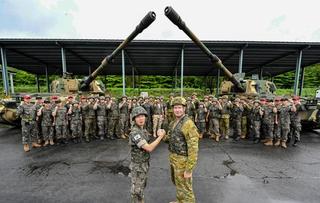
The US-ROK alliance
Public support for the US-ROK alliance remains remarkably resilient in South Korea, with recent surveys indicating approval levels consistently exceeding 90% for more than a decade (see Figure 1). While there is certainly broad unease over President Trump’s mercurial and transactional approach to alliance management—including his imposition of 25% tariffs on South Korean exports and recurring demands for Seoul to increase its fiscal support for the presence of US troops on ROK territory—the alliance itself retains a strong backing among the South Korean public. Like Australians and Japanese, South Koreans differentiate their view between a particular US president and the United States more broadly, and the enduring value of the alliance, which has stayed consistently strong given heightened security tensions on the Korean Peninsula and broader region (see Figure 1).
Figure 1. South Korean public opinion polls: Views of the United States, the US President and the US-ROK alliance
That said, the Trump administration’s proposed withdrawal of 4,500 US Forces Korea (USFK) troops from South Korea has sharpened concerns in Seoul about the long-term reliability of US extended deterrence commitments. Experts have noted that this adjustment would not change the fundamentals of US warfighting capabilities, including the symbolic and operational ‘tripwire’ role of the US troop presence, and that troop reductions are hardly new for the alliance. However, there is concern that such an adjustment could send the wrong signal to an increasingly more emboldened Pyongyang.
As part of this force posture renegotiation, President Lee may also have to confront a remodelling of USFK’s force posture from its current army-centric structure toward a more maritime and air-heavy composition. Such a shift could come as Washington seeks to better align its defence presence on the peninsula with its primary objective of managing strategic competition with China. As Dr Michael J. Green has observed, South Korea’s continental strategic orientation — primarily anchored in the North Korea threat — renders it a more ambiguous player in US regional planning compared to America’s maritime allies like Japan, Australia and the Philippines. These allies have become more deeply integrated into Washington’s broader Indo-Pacific strategic outlook, which subsequently leaves Seoul’s military and strategic focus towards the North Korean threat as a distinct outlier among other regional US allies and partners’ strategic outlooks. As such, the Lee administration may face pressure from Washington to adjust its strategic priorities to accommodate extra-Korean Peninsula strategic issues for sustained US security support.
As part of this, Lee may be pressured to articulate a clearer South Korean role in a potential regional contingency that could involve the United States, such as one in the Taiwan Strait. Specifically, Seoul could face pressure from Washington to provide clear precommitments for rear-area support, including access to South Korean ports and airfields for US forces in need of maintenance, refuelling and logistical staging. While strategic alignment between Seoul and Washington has deepened in recent years on both sides of the South Korean political spectrum — including the progressive Moon Jae-in administration’s official acknowledgment of the importance of stability in the Taiwan Strait — even President Yoon stopped short of naming China explicitly as a strategic competitor, instead repeating Moon’s mantra.
Managing these tensions will require delicate diplomacy by the Lee administration. The South Korean president will be under pressure to reassure the Trump administration of the alliance’s enduring value while also bridging the growing strategic divide between South Korea’s primary peninsula-focused security concerns and Washington’s broader objectives, where China is the primary pacing threat to address. In other words, Lee’s evolving posture in the region will have to consider any potential flashpoints that could trigger US involvement and subsequent demands on its closest allies and partners for support.
China
President Lee’s stated ambition to recalibrate relations with Beijing may also face challenges with structural strategic headwinds and a hardened domestic political environment. Recent polling consistently shows that over 70% of South Koreans hold unfavourable views of China, a dramatic departure from the more ambivalent posture of previous decades. This shift reflects broader concerns about Beijing’s economic coercion, assertiveness in the region — including the construction of artificial structures in the Yellow Sea, overlapping South Korea’s Exclusive Economic Zone — and growing strategic alignment with Moscow, Pyongyang and Iran. At the same time, Seoul has taken concrete steps to reduce its economic dependence on China, once its dominant export market. Indeed, as of 2024, South Korean exports to the United States were on par with those to China, with each market accounting for roughly 20% of the country’s total exports.
Still, given the importance of the ROK-China economic relationship — and, of course, Beijing’s important role in influencing Korean Peninsula security — Lee’s pledge to address South Korea’s economic woes will likely see his administration remain more cautious on regional security matters that could seriously impact the relationship. Even under the previous interim conservative government headed by Prime Minister Han Duck-soo, economic concerns saw South Korea join China and Japan in a trilateral discussion in March on economic cooperation and East Asian security issues in the lead up to President Trump’s expected ‘Liberation Day’ tariffs.
The importance of this bilateral relationship has also been reflected in Lee’s first phone call with Chinese President Xi Jinping, where he personally extended an invitation Xi to attend the Asia-Pacific Economic Cooperation (APEC) summit, to be held in South Korea in November, and has asked Beijing to play a constructive role in supporting peace and denuclearisation on the Korean Peninsula. Managing this relationship against its security relationship with the United States will, again, be a daunting variable in South Korea’s developing regional strategy as it navigates intensifying US-China strategic competition.
North Korea
Perhaps the most immediate and disquieting development for Seoul’s strategic calculus and level of commitment to broader Indo-Pacific security issues, is the accelerating entente between Pyongyang and Moscow. North Korea seized upon Russia’s invasion of Ukraine to help break out of its longstanding isolation, providing President Putin with immediate diplomatic support and sustained military assistance in the form of artillery shells, munitions and, more significantly, some 14,000 troops to support the war effort. In return, Russia appears to be compensating Pyongyang with vital supplies of food and energy, as well as access to advanced military technologies, including aircraft, missile systems and possibly even submarine capabilities.
Moscow’s backing lends North Korea both material support and strategic cover, emboldening its pursuit of military modernisation and, in turn, potentially raising its willingness to test the limits of US and South Korean deterrence on the Korean Peninsula and the US-ROK alliance’s cohesion over the long-term. Of particular concern is the use of the Ukrainian battlefield as a testing ground for North Korean weapons systems. US Government reports indicate that through Russian attacks on Ukraine, Pyongyang has been able to evaluate the performance of its 170mm self-propelled artillery, 240mm multiple rocket launchers and variants of its short-range ballistic missile, Hwasong-11. This operational feedback loop could help enhance the development of North Korea’s military assets — some of which have been found not to work or even explode on the Ukrainian battlefield — and raise the effectiveness of its warfighting capabilities on the Korean Peninsula, should deterrence fail.
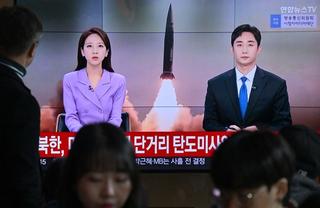
Notwithstanding the constraints of a changed strategic environment, the DPK’s enduring priority for engaging Pyongyang remains evident in President Lee’s early foreign policy statements and political appointments. In his inauguration speech, Lee stated his desire to reopen communications with North Korea, including the restoration of the inter-Korean hotline severed by Pyongyang, as a step toward “building peace on the Peninsula.” To support these efforts, the Lee administration has suspended ROK propaganda broadcasts across the Demilitarized Zone and has recently directed all relevant government departments to devise measures that prevent or penalise the dispatching of leaflets critical of the DPRK regime across the border. Lee has also appointed former unification minister, Lee Jong-seok, as chief of the National Intelligence Service. A veteran of the Roh Moo-hyun and early Moon Jae-in administrations, Lee Jong-seok has consistently championed engagement with Pyongyang and demonstrated an inclination to prioritise inter-Korean reconciliation over alliance coherence with Washington.
The alignment of President Trump in the White House — who has publicly stated his interest in renewed engagement with North Korea — and President Lee in South Korea’s Blue House may create a more conducive environment for such engagement than was possible under the Biden-Yoon era. Kim Jong-un, though, has shown little inclination to reengage with either Washington or Seoul, reportedly rejecting attempts by US officials to deliver a personal letter from Trump. Yet geopolitical dynamics may eventually recalibrate North Korea’s calculus. Russia’s ongoing entanglement in Ukraine and Kim’s weariness of greater Chinese economic involvement in North Korea could increase the appeal of an alternative partner for domestic economic support — particularly if he believes that his deterrence posture, now buttressed by strategic ties with Moscow, is secure.
Whether or not Kim Jong Un chooses to reciprocate renewed diplomatic outreach from Seoul and Washington, a sharper focus on North Korea could serve as an effective bridge linking South Korea’s peninsula-centred threat perceptions with Washington’s broader Indo-Pacific framework. The Biden administration’s regional strategy largely treated North Korea as a secondary issue, adopting a posture reminiscent of President Obama’s “Strategic Patience” policy, relegating the country to the periphery of its regional vision as strategic competition with China grew. Yet Pyongyang’s deepening alignment with Moscow — and its expanding role in the growing network of revisionist actors — underscores the consequences of treating North Korea as a siloed, Korean Peninsula-bound problem. It risks overlooking the potential for a more fundamental change in North Korean foreign policy and its self-perceptions of agency in influencing regional and global strategic situations. South Korean efforts towards North Korea, if approached with an eye to the wider regional and global context, could form an important feature of Seoul’s emerging regional role and help mitigate the ambiguities stemming from its current position in the United States’ Indo-Pacific strategy.
South Korea’s next steps: Towards a more focused and selective regional strategy
How the Lee administration navigates its relationships with the United States, China and North Korea will decisively shape the trajectory of South Korea’s regional strategy over the next five years. Early indications based on Lee’s public statements and key political appointments suggest a more restrained Indo-Pacific outlook: one that is narrower in scope, more selective in engagement, and less explicitly grounded in liberal democratic values than that of its predecessor.
This dynamic could present opportunities for Australia and other regional players to engage constructively with the new administration on matters of regional strategy. As analysts such as Lami Kim have noted, the ambition of Yoon’s Indo-Pacific agenda often outpaced what South Korea, as a middle power with finite resources, could effectively prosecute. Its rhetorical breadth frequently came at the cost of depth. For example, Australia had anticipated a new “window” of cooperation for deepening its Comprehensive Strategic Partnership with Seoul. Yet the familiar start-stop pattern of progress reemerged — most notably with its bid for Australia’s SEA3000 frigate program, where political volatility in Seoul played a role in undercutting the administration’s sustained support for what might have become a pivotal defence industrial collaboration. In this context, the Lee administration appears poised to adopt a more targeted approach, prioritising areas where South Korean regional engagement can deliver more meaningful value-add to shared interests.
Southeast Asia is emerging as a likely focal point.
Southeast Asia’s prioritisation is already evident by Lee’s appointment of Park Yoon-joo, South Korea’s former envoy to ASEAN, as the administration’s first Vice Minister in the Ministry of Foreign Affairs (MOFA). Moreover, while Lee’s own foreign policy credentials are limited, his personal record as governor of Gyeonggi Province also points to a longstanding interest in Southeast Asia that will likely feature in his regional strategy. Under Lee’s leadership, the Gyeonggi province launched significant outreach to ASEAN markets in 2019, including business delegations to Thailand and Myanmar that generated nearly $8 million in commercial agreements. During the 2022 presidential campaign, Lee also publicly endorsed the continuation of Moon Jae-in’s “New Southern Policy,” casting Southeast Asian countries as ‘strategic partners’ in South Korea’s broader regional engagement. Surrounding himself with advisors well familiar with Southeast Asia, Lee’s limited foreign policy experience in this part of the Indo-Pacific will likely be activated.
This renewed Southeast Asia focus offers a strategic opportunity for continued cooperation with like-minded partners, most notably including Australia. Indeed, one of the missed opportunities of the Moon administration’s 2017 New Southern Policy was its failure to identify Australia as part of southbound strategic engagement drive and coordinate with Australia’s concurrent defence efforts in Southeast Asia. Ensuring future South Korea-Australia initiatives in maritime capacity-building and defence assistance are complementary rather than duplicative will be essential for supporting their Southeast Asian partners’ maritime sovereignty and capacity to absorb Canberra and Seoul’s maritime defence and defence industrial initiatives.
Lee’s appointment of Kim Jina, a former fellow at the Perth USAsia Centre, to the role of Second Vice Minister at MOFA is a promising development for the South Korea-Australia relationship, helping ensure Australian expertise are better represented within Seoul’s foreign policy decision-making body. Given Lee’s focus on revitalising South Korea’s slowing economy during the campaign, his administration’s Indo-Pacific strategy is likely to prioritise building stronger economic ties with countries and regional frameworks that support South Korea’s export-oriented growth. One key avenue is the Comprehensive and Progressive Agreement for Trans-Pacific Partnership (CPTPP), which South Korea has shown interest in joining since 2021, under the Moon administration. With Australia currently chairing the CPTPP, there is a timely opportunity for Canberra to advance Seoul’s accession and pursue other joint initiatives that reinforce the stability and resilience of the international trade system on which their economies both rely.
Taken together, the progressive foreign policy instincts of the DPK and the mounting pressures of a deteriorating regional security environment suggest that the Lee administration will likely adopt a more focused and selective approach to regional strategy. By potentially narrowing its foreign policy aperture to concentrate on a smaller number of priority areas such as Southeast Asia and the Korean Peninsula — while remaining attentive to the region’s broader security dynamics and filling important economic and defence gaps within its partners’ Indo-Pacific strategies — Seoul may ultimately field a more durable and effective strategy than its predecessor. For Canberra, Washington and others, the imperative will be to engage Seoul early on the terms of this recalibrated strategy to ensure continued convergence in a region where strategic competition is accelerating.
